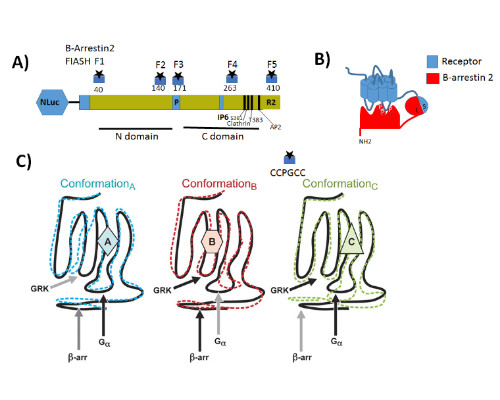Structure Determination from Powder Diffraction Data (International Union of Crystallography Monogra
Contents:
Classical, Early, and Medieval World History: Civil War American History: Users without a subscription are not able to see the full content. Bibliographic Information Print publication date: Authors Affiliations are at time of print publication. Print Save Cite Email Share. Subscriber Login Email Address.
Subscriber Login
Cox, and Andrew N. Ibberson, and William I.
- Gun Digest Book of Revolvers Assembly/Disassembly (Gun Digest Book of Firearms Assembly/Disassembly)!
- .
- ;
- White by Law 10th Anniversary Edition: The Legal Construction of Race (Critical America).
Hill, and Ian C. David, and Devinderjit S. McCusker, and William I. Moliterni, Giampiero Polidori, and Rosanna Rizzi.
Structure Determination from Powder Diffraction Data
The high spectral brightness, high degree of collimation and tunability make synchrotron X-rays the ideal source for this purpose. The disadvantages for routine work are limited access and the likelihood of a long lead time for experiments.
International Union of Crystallography Monographs on Crystallography No. Ab initio structure solution using powder diffraction data from materials for which no diffraction data, effectively a sequel to The Rietveld method, Monograph No. The art of solving a structure from powder diffraction data has developed rapidly over the last ten years Laboratory of Crystallography, ETH Zurich, Switzerland.
Neutron powder diffraction data are generally more suited to structure refinement than solution, but R. David point out in chapter 5 that this is an over-simplification; there are several instances where it is advantageous to use thermal neutrons, particularly with time-of-flight diffractometers.
- .
- Die Pflege Ihres Hundes: Band 1 Basiswissen und Grundpflege (German Edition).
- !
- .
- !
- !
They also demonstrate that the combination of X-ray and neutron data provides a powerful tool for structure solution. Structures of greater complexity can be solved and the latter helps to locate light atoms. A crucial step in structure solution is a determination of the unit-cell dimensions from peak positions, leading to a reconstruction of the three-dimensional crystal lattice from the one-dimensional positions of reflections in the powder pattern. This procedure, often known as autoindexing, is covered in chapter 7, by P.
Structure Determination from Powder Diffraction Data - Oxford Scholarship
The three principal and most widely used indexing programs are considered and compared, and potential pitfalls are discussed. As Werner points out, all the programs are dependent, in different ways, on having data of high quality, with relatively small systematic errors. It is therefore often desirable to compare the results from different programs. Indexing is one of the success stories of powder diffraction. With accurate peak positions, combined with other available information about the sample, the unit cell and crystal lattice can usually be determined with confidence, provided that any unindexed lines can be attributed to impurities.
The next two chapters deal with the theoretical and experimental aspects of one of the basic problems of structure solution from powder data, namely that of extracting integrated intensities from overlapping reflections. Although the procedure is relatively straightforward, the success of structure solution depends on obtaining as many single-crystal-like intensities as possible. In chapter 9 it is shown that, for some materials, the number can be increased by collecting datasets under different experimental conditions.
A by-product of intensity extraction is the determination of one or more possible space groups.
- Jesus el Profeta de Fuego (Spanish Edition).
- Lets Talk: Food, Fun, Fitness, and More?
- .
- West Papua Free!! Volume II;
Methods for solving the structure are covered in chapters 10 to These are grouped as adaptations of standard single-crystal techniques, direct-space methods based on prior chemical knowledge, and a combination of the two. In chapter 11 there is a useful list of pitfalls to avoid when using powder data.

Although this is specifically aimed at users of direct methods, several of the items listed are applicable generally. Other methods adapted to powder diffraction data are Patterson techniques and the maximum-entropy approach chapters 13 and Direct-space methods, global optimization strategies chapter 15 and simulated annealing chapter 16 , were mainly, but not exclusively, developed for molecular compounds. They involve creating a plausible structural model and then assessing its validity by comparing calculated and experimental powder patterns.
Extraction of the intensity of individual reflections is thus avoided in this approach.
Indexing is one of the success stories of powder diffraction. The book concludes with a list of the principal computer programs needed for structure solution from powder data, but there is no mention here of the Collaborative Computational Project No. Indeed, a valuable feature is the use of copious examples throughout, to illustrate the key stages of the process, and there are references to other work covering a wide range of materials. Fitch show how the special properties of a synchrotron source can be used to advantage in providing data for structure solution. Crystallographic software for powder diffraction is freely available from the CCP14 website http: Direct-space methods, global optimization strategies chapter 15 and simulated annealing chapter 16 , were mainly, but not exclusively, developed for molecular compounds.
As mentioned in chapter 1, the final stage in the process is refinement of the structure by means of the Rietveld method; this should confirm the correctness of the solution, but it can also reveal inadequacies in the structural model. The method is not treated separately, though there are references to it throughout the book.
In the final chapter, L. Baerlocher stress the importance of using additional information, such as chemical composition, physical properties, structural features of related compounds and the results of non-diffraction experiments. These factors can help to offset the relatively low information content of a powder pattern, compared with a single-crystal dataset. McCusker and Baerlocher show how the extra information can be used at every stage, from data collection onwards. This important chapter should therefore be read at the outset, in conjunction with chapter 6, since its content can influence strategy in subsequent stages.